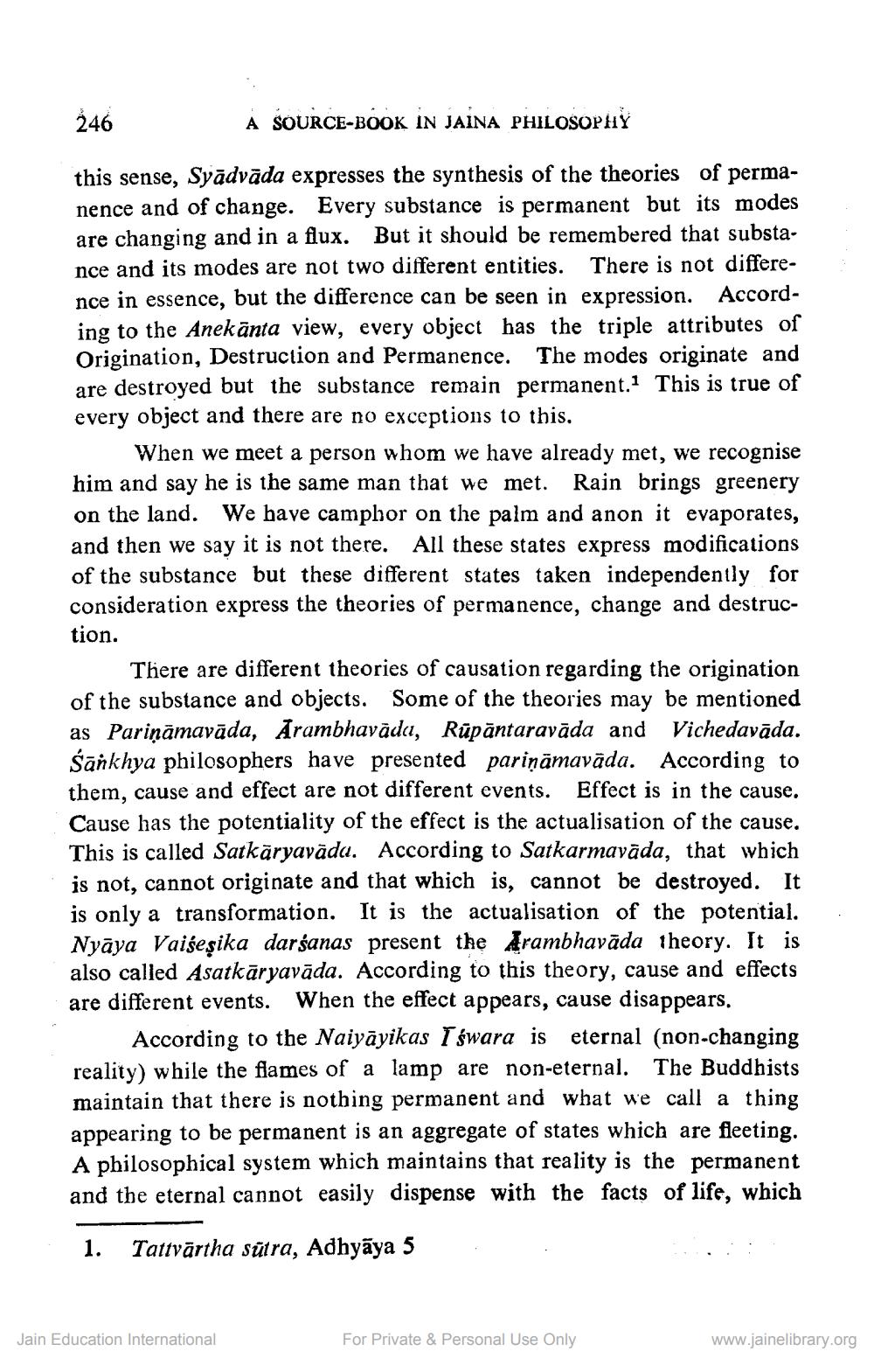________________
246
À SOURCE-BOOK IN JAINA PHILOSOPHY
this sense, Syādvāda expresses the synthesis of the theories of permanence and of change. Every substance is permanent but its modes are changing and in a flux. But it should be remembered that substance and its modes are not two different entities. There is not difference in essence, but the difference can be seen in expression. According to the Anekānta view, every object has the triple attributes of Origination, Destruction and Permanence. The modes originate and are destroyed but the substance remain permanent. This is true of every object and there are no exceptions to this.
When we meet a person whom we have already met, we recognise him and say he is the same man that we met. Rain brings greenery on the land. We have camphor on the palm and anon it evaporates, and then we say it is not there. All these states express modifications of the substance but these different states taken independently for consideration express the theories of permanence, change and destruction.
There are different theories of causation regarding the origination of the substance and objects. Some of the theories may be mentioned as Pariņāmavāda, Arambhavāda, Rūpāntaravāda and Vichedavāda. śānkhya philosophers have presented pariņāmavāda. According to them, cause and effect are not different events. Effect is in the cause. Cause has the potentiality of the effect is the actualisation of the cause. This is called Satkāryavāda. According to Satkarmavāda, that which is not, cannot originate and that which is, cannot be destroyed. It is only a transformation. It is the actualisation of the potential. Nyāya Vaiseșika darśanas present the Arambhavāda Theory. It is also called Asatkāryavāda. According to this theory, cause and effects are different events. When the effect appears, cause disappears.
According to the Naiyāyikas s swara is eternal (non-changing reality) while the flames of a lamp are non-eternal. The Buddhists maintain that there is nothing permanent and what we call a thing appearing to be permanent is an aggregate of states which are fleeting. A philosophical system which maintains that reality is the permanent and the eternal cannot easily dispense with the facts of life, which
1.
Tattvārtha sütra, Adhyāya 5
Jain Education International
For Private & Personal Use Only
www.jainelibrary.org




